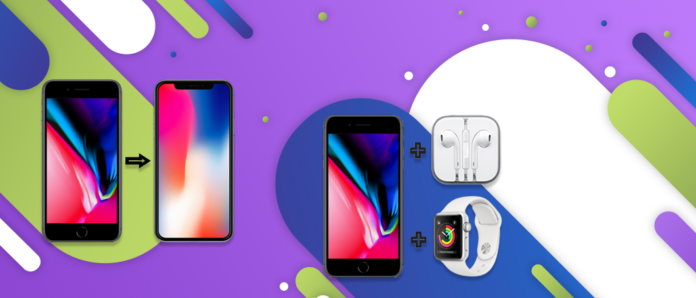An increase in site traffic is the matter of prime concern for most eCommerce merchants. I don’t deny that the targeted traffic is vital for online business success. However, there are other power tactics that help increase profit ― a boost in the average order value (AOV) and conversion rate. That’s where up-selling & cross-selling come in handy.
According to OptinMonster, product recommendations drive 10-30% of revenue.
In this blog post, I offer 14 working strategies that are based on the global eCommerce experience of up-selling & cross-selling (click here to learn how to introduce up-sells & cross-sells functionality in a Shopify store). So, let’s have an insight.
Table of Contents
What is the Difference Between Up-selling & Cross-selling?
Before getting into the details, let’s figure out completely and thoroughly what each method is about.
What Does Up-selling Mean?

Put simply, up-selling is the technique when you literally offer to purchase a more expensive product. In addition to promoting more expensive offerings, up-selling also incentivizes purchases of a greater number of items/services. The goal of up-selling is to increase the average purchase amount.
The McDonald’s customers are often asked ‘Would you like fries or a drink with that?’. This short & simple phrase is a beautiful example of upselling that has already helped the fast-food giant make a fortune.
What is Cross-Selling?

Cross-selling is another means to grow revenue by suggesting additional items (often related) from another category.
For instance, if the customer wishes to buy a mobile phone, you can offer them an additional product or/and services: earphones, extended guarantee, phone case, and etc. Thus, it can be any item/service that expands the phone’s usage, while increasing your revenue level.
For instance, if the customer wishes to buy a mobile phone, you can offer them an additional product or/and services: earphones, extended guarantee, phone case, and etc. Thus, it can be any item/service that expands the phone’s usage, while increasing your revenue level.
What Financial Gain Do Up-selling & Cross-selling Bring?
The most successful eCommerce sellers have learned to combine cross-sells and upsells:
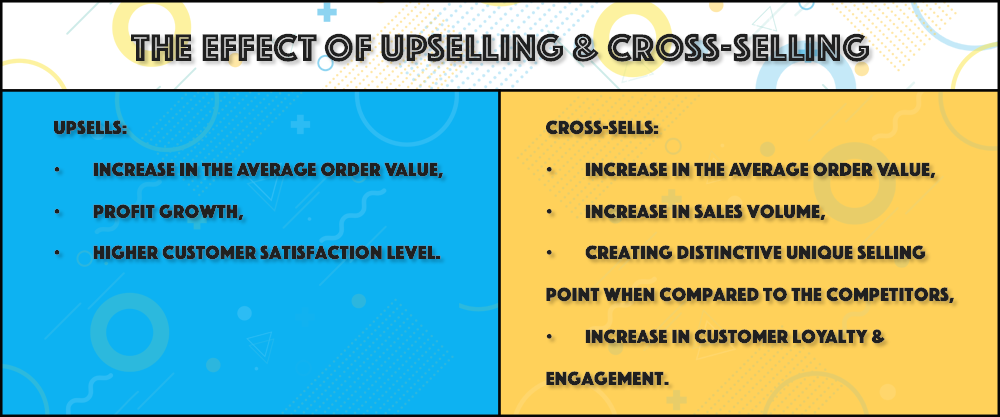
How to Implement Cross-Selling & Up-selling in Your eCommerce Store?
Let’s go into more detail and analyze these 2 methods separately. You’ll see there is a fine line between them.
Nevertheless, when it comes to the introduction of up-selling & cross-selling on your site, the following site destinations should be considered:
Nevertheless, when it comes to the introduction of up-selling & cross-selling on your site, the following site destinations should be considered:
Main Page
Use your site’s main page as a window display for the most popular items that are worth checking out. Or, include smart product recommendations. Sometimes, online surfers come to the main page without any particular product in mind ― use this site destination to inform the shoppers about popular products, special offers, and promotions.
You can also use the main page to give a full picture of the range of the available products.
You can also use the main page to give a full picture of the range of the available products.
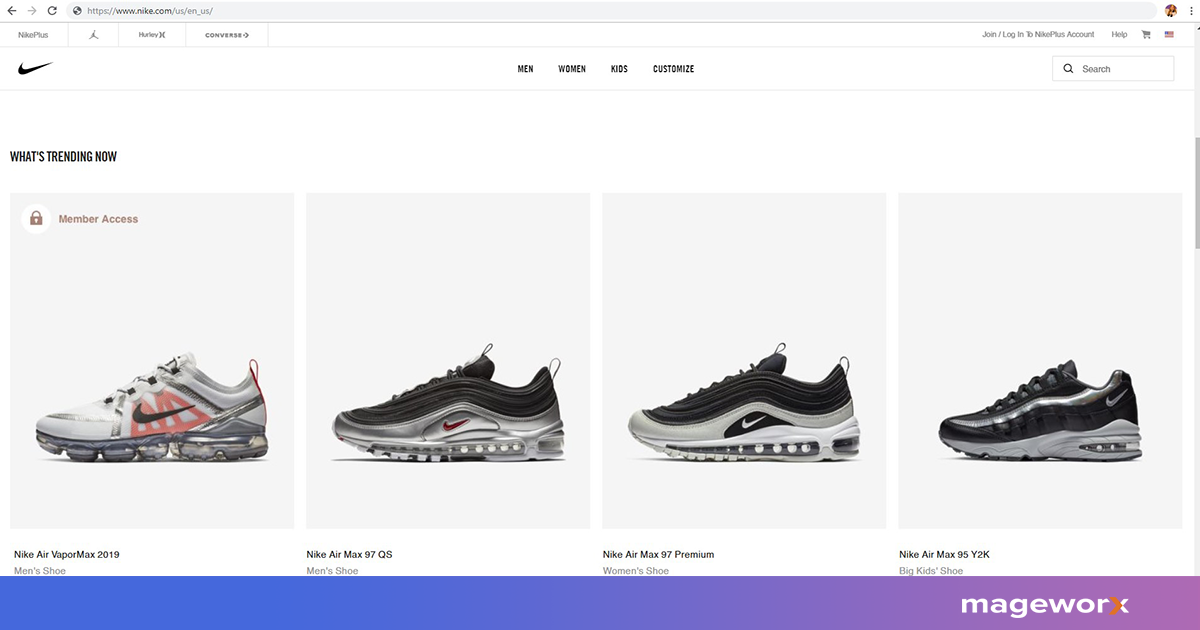
Product Pages
As a rule, the potential customers view product pages when they are already interested. Related products, as well as ‘You can also like’ suggestions help keep your site visitors hooked. All rolled into one, i.e., a chance to increase sales and display related items that the shopper may choose in case the current product doesn’t fully fit the expectations.
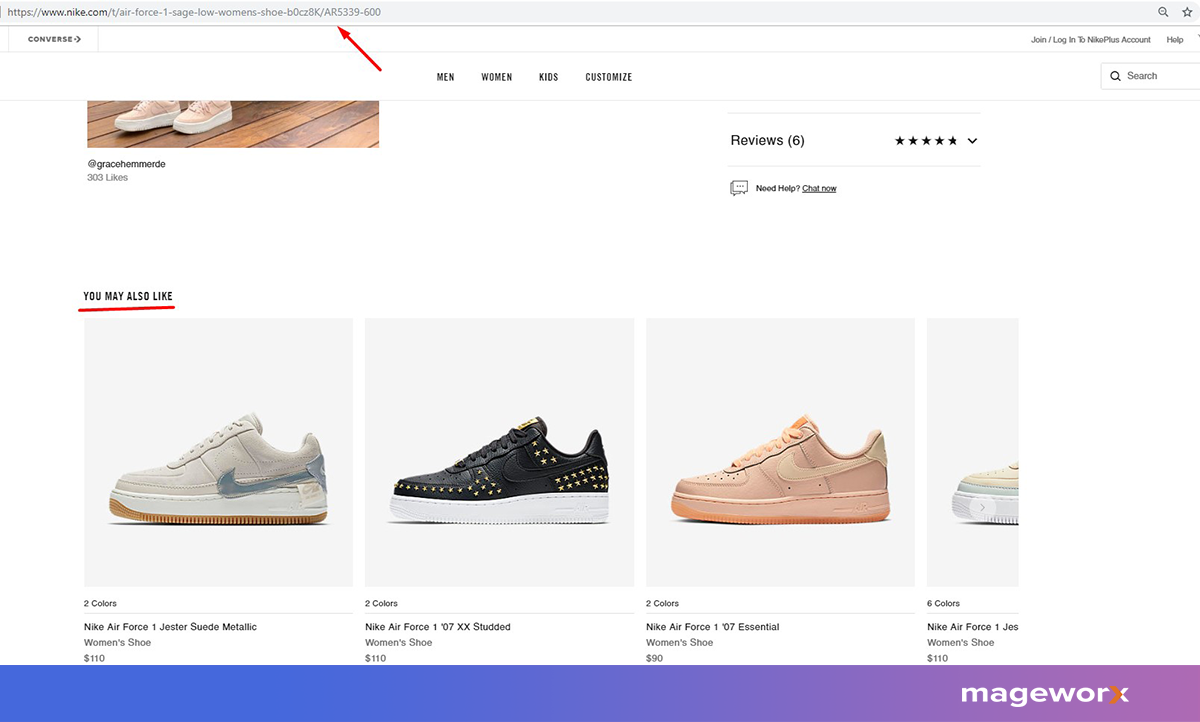
Cart Page
In order to increase order value, you can offer relevant items/services depending on what the shopper has added to cart. Such smart suggestions are a great way to save the customer from the trouble of doing further onsite research, thus increasing the order amount.
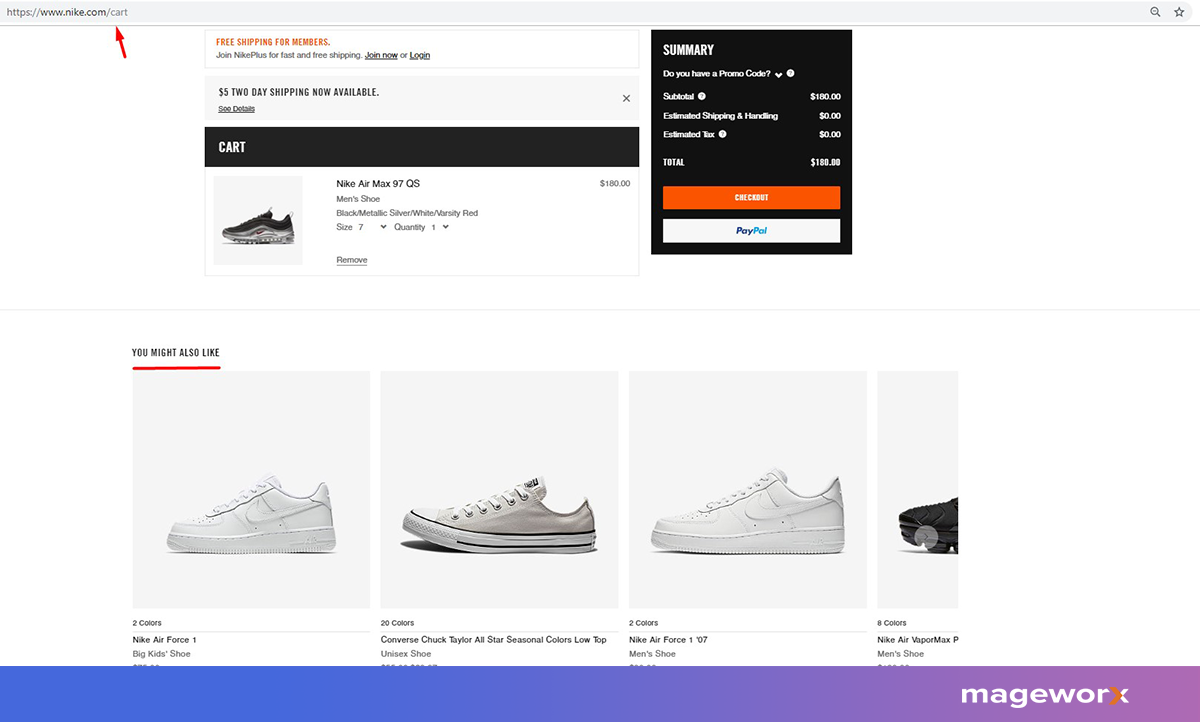
14 Examples of Using Cross-sells & Upsells in Online Retail
Up-selling
Here are the most effective ways to incentivize purchasing of more expensive offerings:
Product recommendations
This is probably one of the most popular ways of up-selling. Recommendations can be either based on a specified by you (as a merchant) criteria or randomly.
For example, Lee promotes ‘Insta Favorites’ right on the main page:
For example, Lee promotes ‘Insta Favorites’ right on the main page:

You can also place recommendations on the product page. For example, Asos offers 2 blocks with product recommendations ― ‘Buy the Look’ & ‘You might also like’. That’s like killing two birds with one stone:

H&M, in turn, offers ‘You may also like’ and ‘Popular products’ blocks on the shopping cart page:

Or, Walmart and their ‘Customers also considered’:

New arrivals
Promotion of new products is another possibility to increase average order value. Shoppers just love newly-designed products. Surely, much depends on your target audience and the kind of products/services you offer. For instance, new arrivals are vital for fashion & clothing. If that’s what you are offering, then a block with trendy and new items would be a must.
Thus, Finishline offers to ‘Shop the latest & greatest shoes’:

Seasonal offers
This is another great way of up-selling. You’ll see such offerings on the main page the most often. To achieve success when offering seasonal products, you’d need to thoroughly sort out the range of your offerings.
Additionally, this block can be transformed into seasonal sales to enhance the shoppers’ interest:
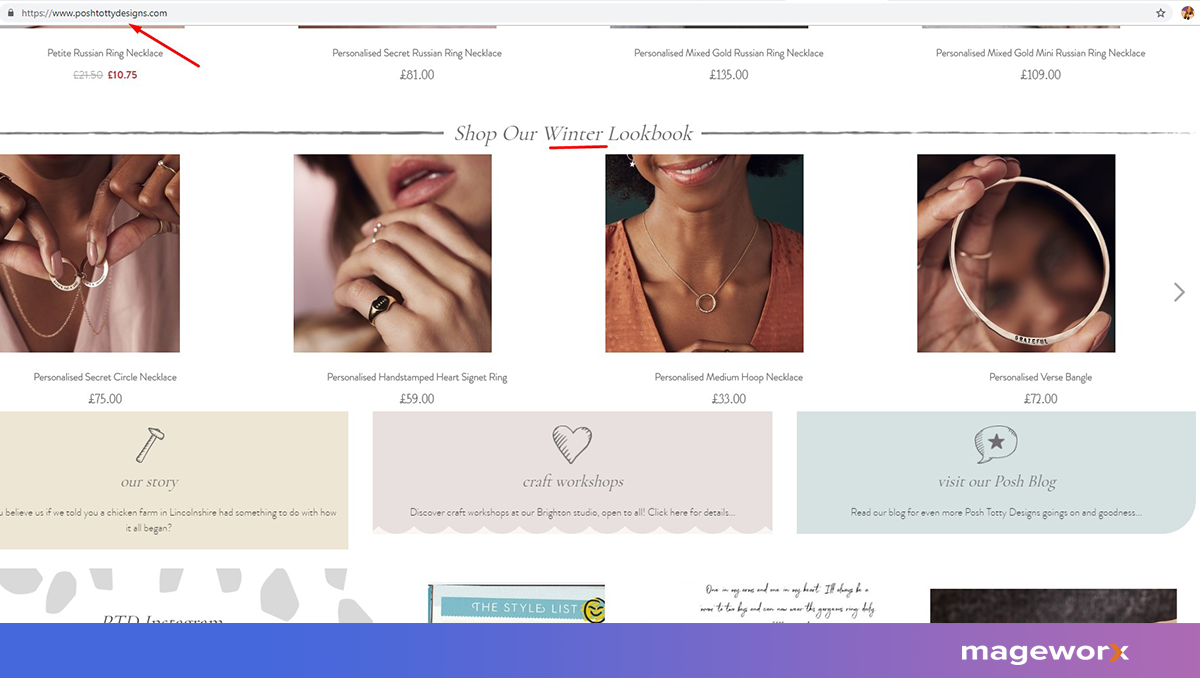
Daily special offers
Daily offers are great attention grabbers, as well as a good way to display various items from different categories. Such offers create the feeling of urgency, especially if you add ‘Limited Quantity’, ‘Available for 1 day only’, or ‘1-day sale’ to that block.
eBay, for instance, is well known for its ‘Daily deals’ that are offered on the main page:
eBay, for instance, is well known for its ‘Daily deals’ that are offered on the main page:

Bestsellers
Up-selling the most popular products is certainly an easy but yet highly effective way to increase order value.
In order to create this block, you’ll need to analyze the best selling items. Also, you can analyze the most viewed pages of your online store to select the most popular products.

Similar items
This type of up-selling is often used on the category pages. They can be products that ‘You’ll also like’.
For instance, eBay currently offers ‘Similar sponsored items’:
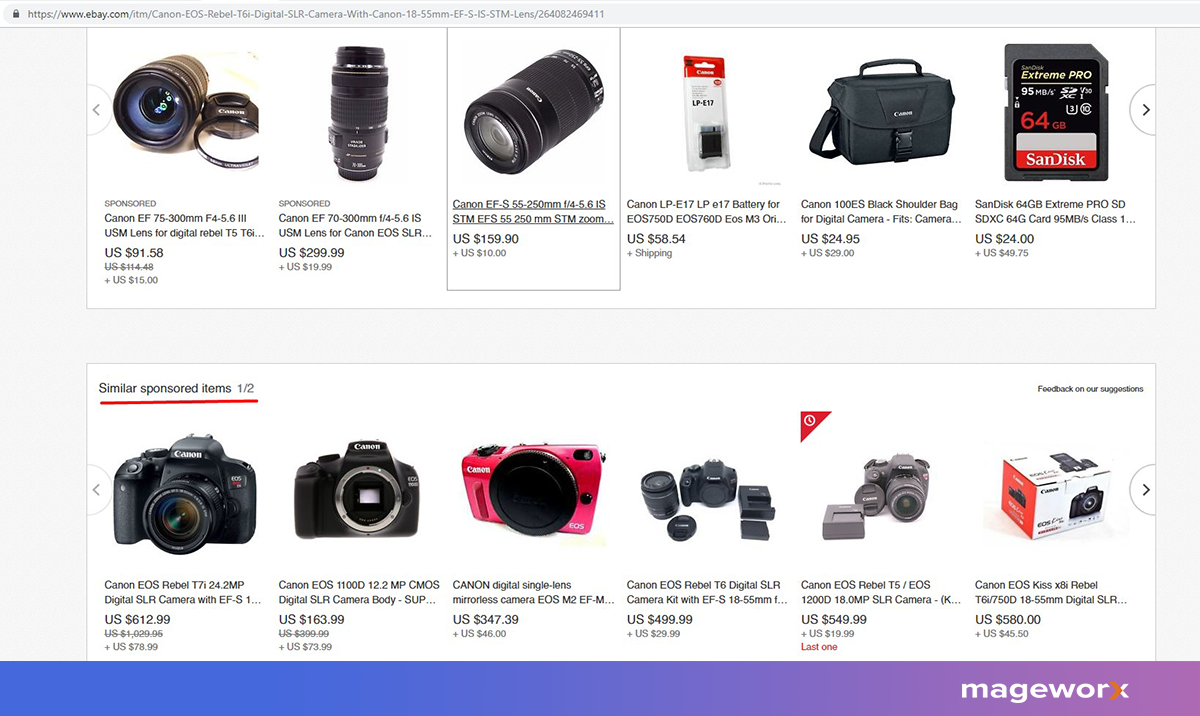
Items that the shoppers are looking at right now
Sometimes, the eCommerce sellers include data about when an item was last bought or viewed. Alternatively, in order to increase sales, you can display a block with the offerings that were recently viewed/bought. Here is how Etsy does it on the main page:
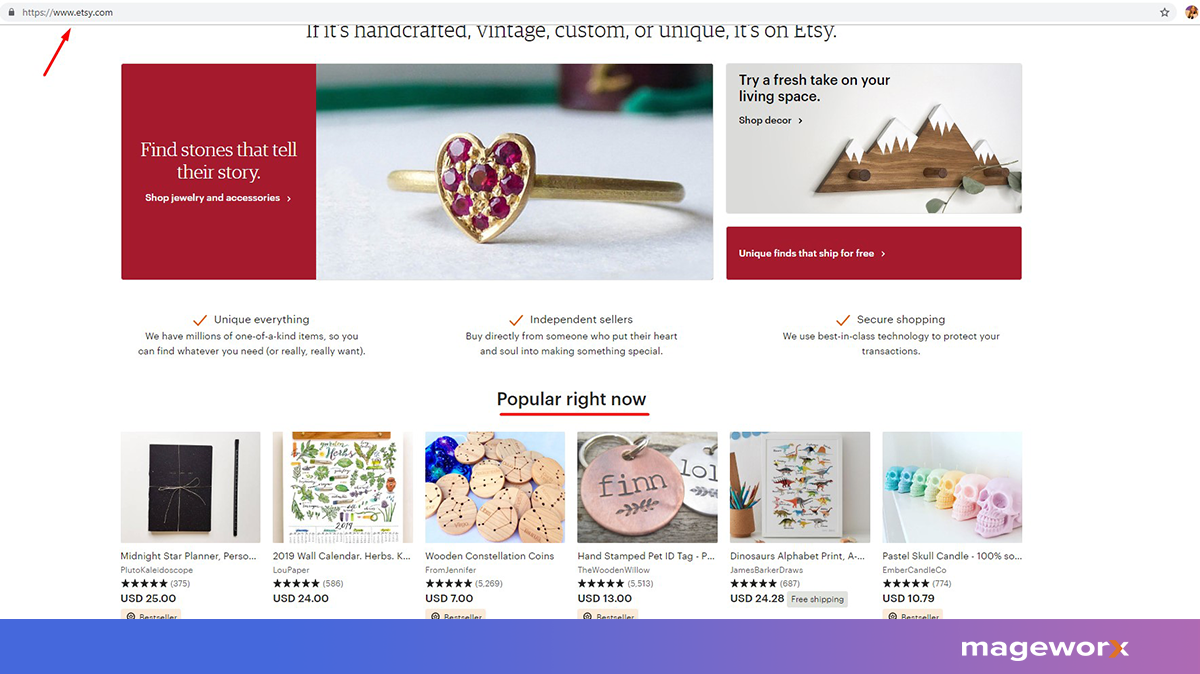
Products recommended in the mini-cart
Mini-cart is a great means of up-selling. Besides ensuring quick cart access & overview, mini-cart works perfectly for promoting additional items or up-selling.
For example, Lancome displays related products in the sidebar of the mini-cart:
For example, Lancome displays related products in the sidebar of the mini-cart:

Offering upgrade
The main objective of up-selling is to convince the shoppers that a more expensive product will bring them more value. In order to use the technic, you’ll need to analyze how your regulars shop or go for smart technologies.
Proflowers is a great example of product upgrades. On the shopping cart page, they don’t simply offer to double the number of flowers, but also recommend a more expensive vase that will better match the selected bouquet.
Proflowers is a great example of product upgrades. On the shopping cart page, they don’t simply offer to double the number of flowers, but also recommend a more expensive vase that will better match the selected bouquet.
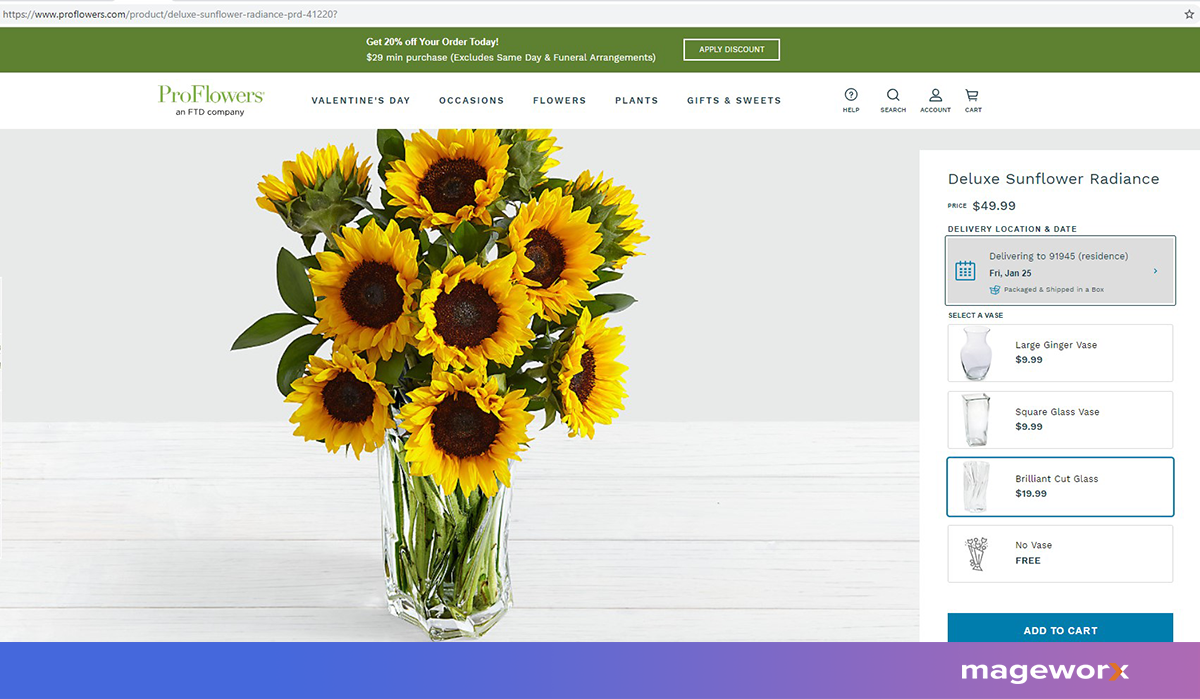
Product kits
Though packaged offers are most often related to cross-selling, they can be used as upsells. By offerings discounts on product kits, you can incentivize the customers’ adding more valuable offerings to the cart (Know how to implement it on Shopify? Product Bundles Shopify app like this can help with that).
Thus, Asos, for instance, offers to ‘Buy the look’ on the product page:
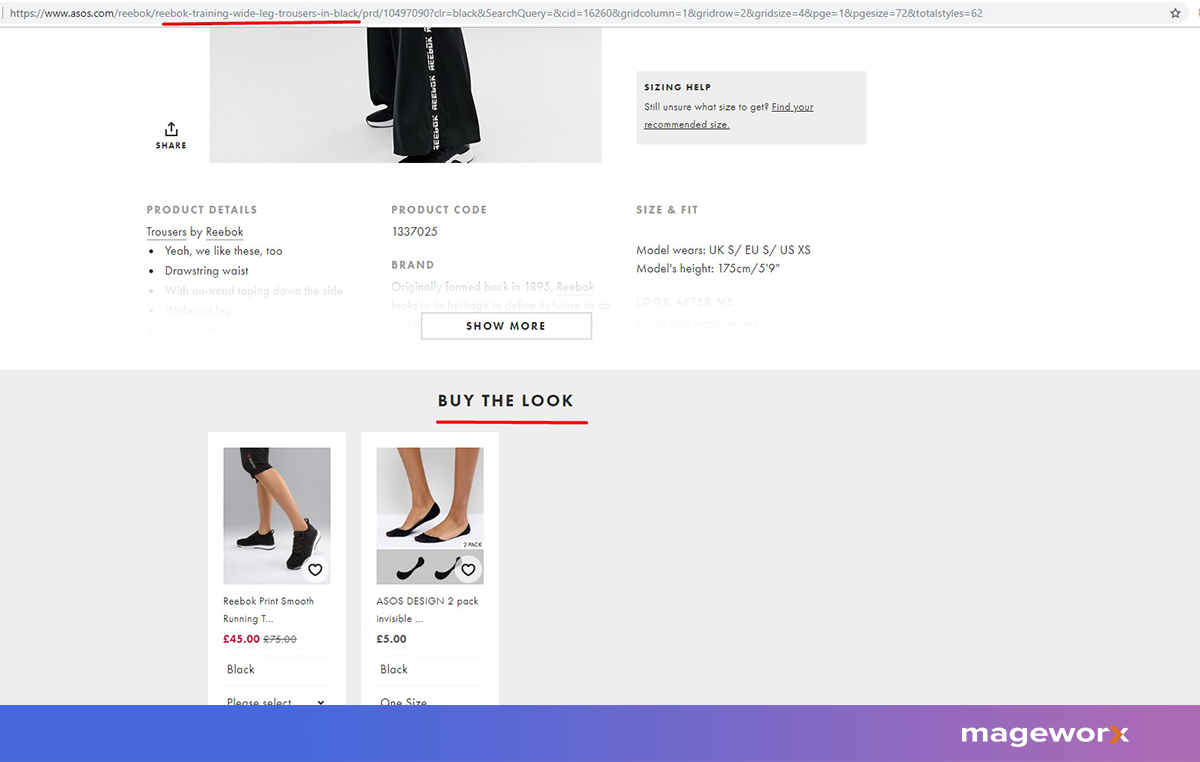
Personalized offers
Today, personalization is the king. Based on the shoppers’ previous onsite navigation and the viewed pages/products, you can create suggestions that are based on the users’ prior sessions.
Such personalized product recommendations have been proved to have a great effect on shoppers. According to Econsultancy, 52% of consumers would share their personal data in exchange for product recommendations. 53% of the surveyed would do the same if they get personalized shopping experience.
Amazon, for instance, even motivates to sign in in order to receive more personalized recommendations:
Amazon, for instance, even motivates to sign in in order to receive more personalized recommendations:

Cross-selling
Now, let’s have a closer look at cross-sells. You’ll see that alike methods and approaches can be used here as well.
Additional products
Suggesting products that would compliment the main product is probably the most popular type of cross-selling. Such recommendations can be made either on main, product or cart pages.
Most often, these are the accessories for the main products that are offered.
You’d need to analyze your offerings and single out items that can bring extra value when used together with the main product.
You’d need to analyze your offerings and single out items that can bring extra value when used together with the main product.
That’s how the most example of cross-selling look like:
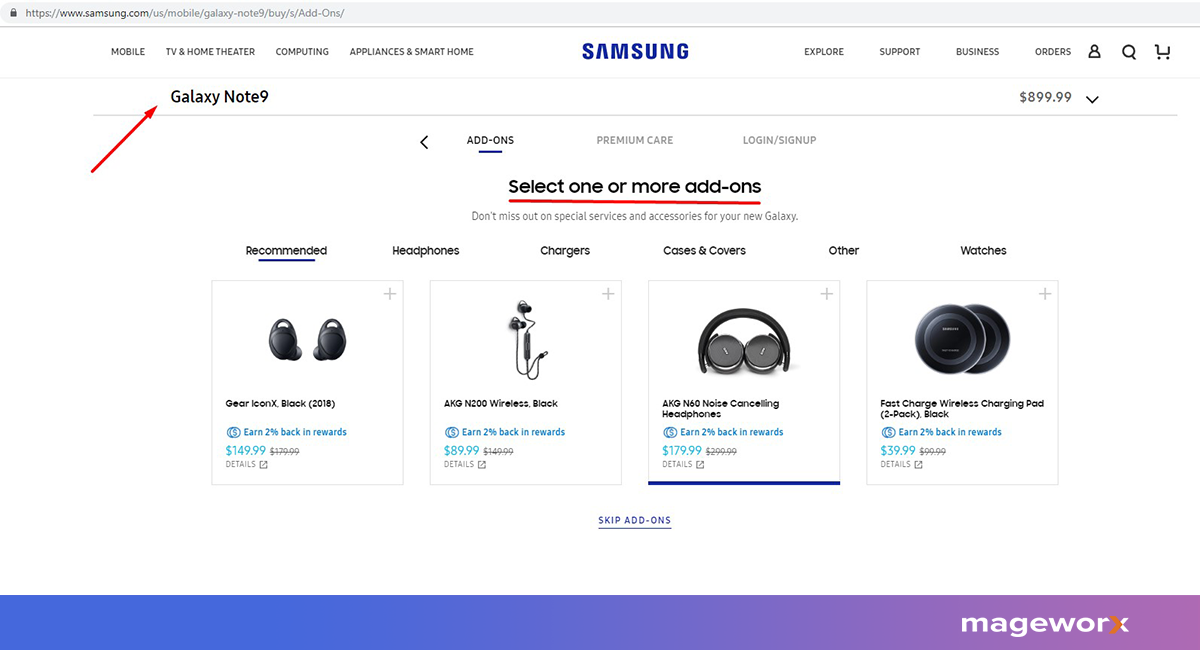
Complementary products
Cross-selling additional products is close to offering complementary items. The only difference is that additional products are primarily used with the main product (like cell phone & the case for it), while complementary products can be used separately (jeans & a t-shirt).
For instance, Under Armour offers products that ‘Come great with’ a selected item:

Frequently bought together
This type of cross-selling would be great to display to new site visitors that don’t have any shopping experience with your online store.
Product selection should be based on the shopping history of the site regulars.
Product selection should be based on the shopping history of the site regulars.
Use the frequently bought together shopify app in your store.
Amazon certainly knows how to impress! 3 blocks with related items, an idealist featuring the viewed product, as well the ‘Customers who bought this item also bought’ block:

Wrap Up
In this blog post, I did my best to overview the most effective cross-selling and up-selling techniques. While you are likely to already use at least one of them in your eCommerce store, I hope the above examples will get you inspired.
***
Do you have any questions, ideas or suggestions regarding this article? Please, feel free to share! Your opinion matters to us.
Do you have any questions, ideas or suggestions regarding this article? Please, feel free to share! Your opinion matters to us.


